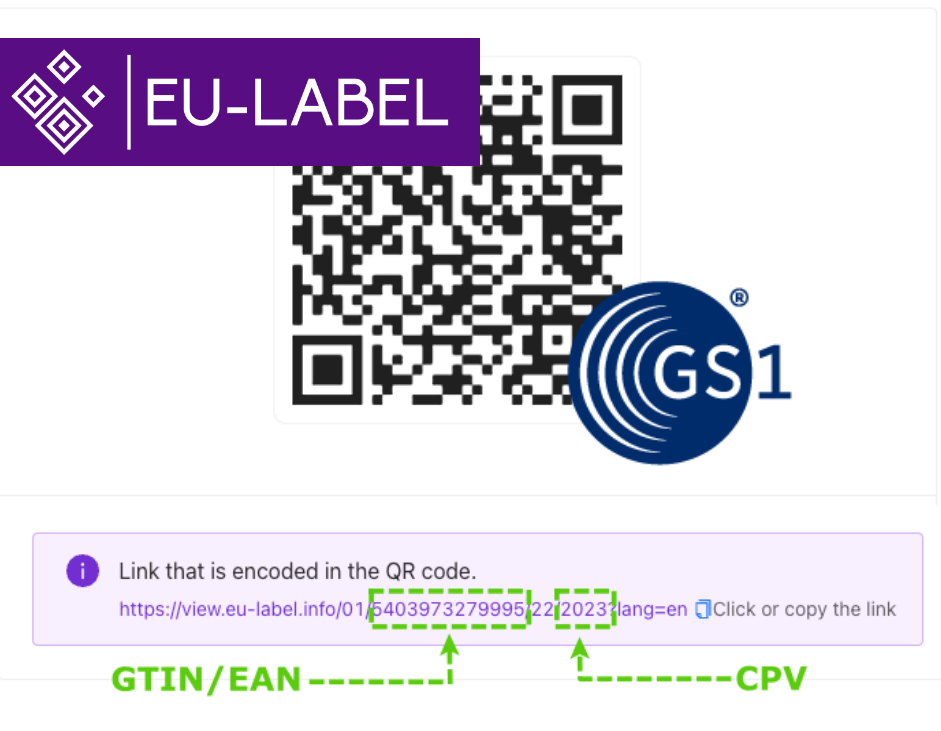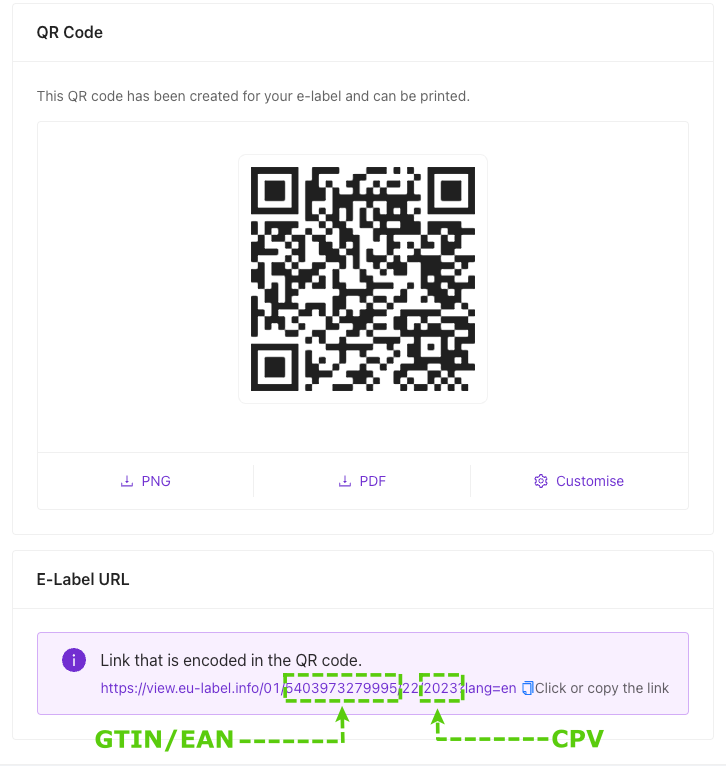11 Jan

Time and Cost Efficient – EU-Label Incorporates GS1 Digital Link Standard in QR Codes
Introduction:
In the the heart of European commerce, a small tech platform named EU-Label has been quietly reshaping the way consumers access product information. Picture this: you’re strolling through a supermarket, scanning QR codes on wine bottles and other products to learn more about their origins, ingredients, and sustainability. Little do you know, the key to this seamless interaction lies in the adoption of the GS1 Digital Link Standard by EU-Label.
This is not just a tech upgrade; it’s a game-changer in the world of supply chain transparency and consumer empowerment. In this blog, we’ll delve into the details of the GS1 Digital Link Standard and explore how EU-Label is harnessing its power to enhance the consumer experience and be time and cost efficient for it’s customers. Buckle up for a journey into the future of product information accessibility!
Understanding GS1 Digital Link Standard:
To appreciate the significance of EU-Label’s adoption of the GS1 Digital Link Standard, let’s first grasp the essence of this groundbreaking standard. Developed by GS1, the global organization dedicated to designing and implementing supply chain standards, the GS1 Digital Link is a powerful tool that transforms traditional barcodes into dynamic, web-enabled identifiers.
Unlike conventional barcodes, the GS1 Digital Link doesn’t just represent a product code. It serves as a gateway to a treasure trove of information, linking consumers directly to a rich set of data hosted online. This data can include everything from product specifications and certifications to real-time updates on the supply chain journey. GS1 Digital Link is simply a QR code with a URL that follows a specific format. It contains your product’s GTIN/EAN and a unique identifier that can be anything: the year, the lot ID or a random number. With this format, QR Codes can be scanned by cash registers and other barcode scanners.
EU-Label’s Vision:
In a world increasingly concerned with product authenticity, sustainability, and ethical sourcing, EU-Label recognized the need for a more robust and user-friendly solution. The incorporation of the GS1 Digital Link Standard in their QR codes aligns seamlessly with their commitment to providing consumers with accurate and comprehensive product information and help customers to reduce time and cost by allowing them to use their GTIN/EAN as an identifier in the generated QR Codes.
For Wine Producers this also means:
- Supply Chain Visibility and Efficiency:
- The GS1 Digital Link extends beyond consumer-facing benefits; it also enhances supply chain visibility for producers. By leveraging digital technology, producers can track their products more efficiently, monitor inventory, and streamline distribution processes.
- Improved supply chain visibility not only reduces operational costs but also contributes to sustainability efforts by minimizing waste and optimizing logistics.
- Data-Driven Decision-Making:
- The data generated through digital labeling and consumer interactions provide valuable insights for producers. Analytics on consumer behavior, preferences, and trends enable data-driven decision-making.
- Producers can refine marketing strategies, product development, and distribution based on the actionable insights derived from the data. This adaptability is crucial in an industry where consumer preferences and market dynamics are constantly evolving.
By adopting this standard, EU-Label empowers consumers to make informed choices, fostering a sense of trust and transparency between producers and consumers. As consumers become more conscious of their purchasing decisions, this move positions EU-Label at the forefront of a revolution in product information accessibility.
Impact on Consumer Choices:
Let’s uncork some statistics to understand the tangible impact of this strategic move. According to a study by Wine Intelligence, 76% of regular wine drinkers express interest in knowing more about the wine they consume. Furthermore, 82% of consumers believe that more information on the label would influence their purchasing decisions positively.
These numbers reflect a growing trend in consumer behavior – a desire for more than just a delightful drink. With the GS1 Digital Link Standard, EU-Label enables consumers to make well-informed choices, creating a bridge between the vineyard and the wine cellar.
Global Trends in Wine Labeling:
The marriage of technology and tradition in wine labeling isn’t confined to the vineyards of Europe. Across the globe, wineries, distributors, and retailers are recognizing the transformative power of digital labels. Major wine-producing regions, from Napa Valley to the hills of Tuscany, are adopting similar technologies to meet the evolving expectations of modern consumers.
EU-Label is not alone in recognizing the potential of the GS1 Digital Link Standard. Major players in the retail and e-commerce sectors, have embraced this technology to enhance the consumer experience. The adoption is not limited to Europe; it’s a global phenomenon, with businesses across continents realizing the transformative power of this standard.
Conclusion:
As we conclude our exploration into the integration of the GS1 Digital Link Standard by EU-Label, it’s evident that this is more than just a technological upgrade. It’s a strategic move that aligns with evolving consumer expectations and a global shift towards transparency and sustainability.
In summary, the impact on producers is multifaceted, encompassing improved brand perception, stronger consumer relationships, operational efficiencies, and the ability to adapt to market dynamics. EU-Label’s adoption of the GS1 Digital Link Standard not only benefits consumers seeking transparency but also provides wine producers with a powerful tool to thrive in an increasingly competitive and dynamic market.
Useful information:
- Try EU-Label for free : https://app.eu-label.info/
- GS1 Digital Link: https://www.gs1.org/standards/gs1-digital-link
- GS1 Org: https://www.gs1.org/
- No credit card, no commitment required
Related:
09 April, 2024
25 March, 2024
21 January, 2025
Copyright © 2023
Owned by Semicolon
